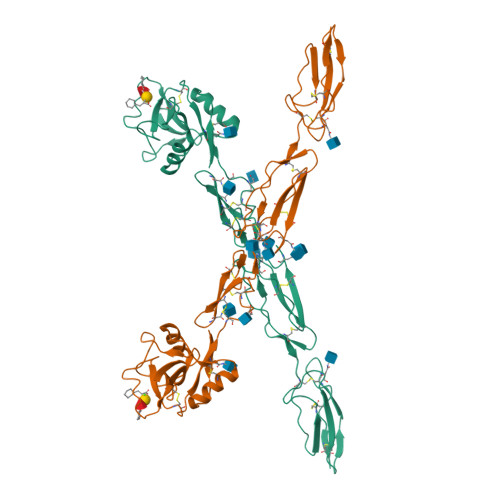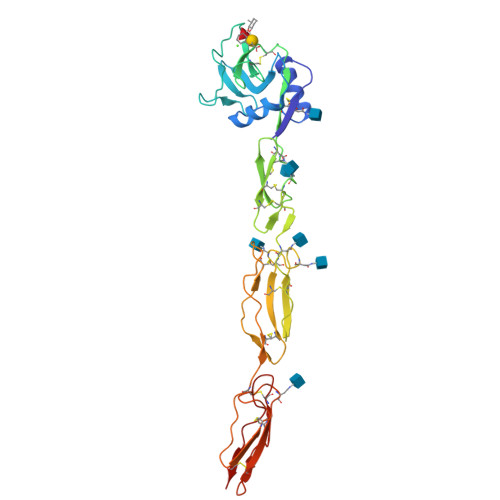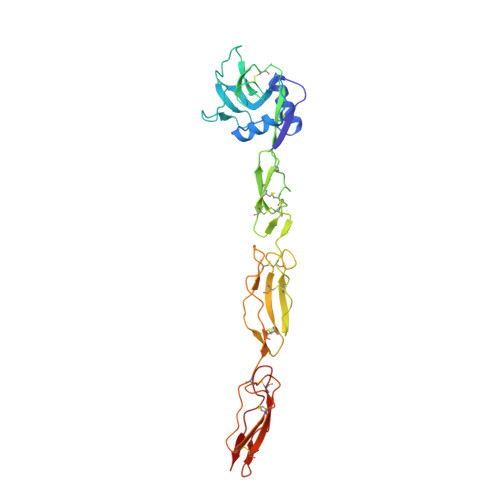E-Selectin Ligand Complexes Adopt an Extended High-Affinity Conformation.
Preston, R.C., Jakob, R.P., Binder, F.P., Sager, C.P., Ernst, B., Maier, T.(2016) J Mol Cell Biol 8: 62
- PubMed: 26117840
- DOI: https://doi.org/10.1093/jmcb/mjv046
- Primary Citation of Related Structures:
4C16, 4CSY - PubMed Abstract:
E-selectin is a cell-adhesion molecule of the vascular endothelium that promotes essential leukocyte rolling in the early inflammatory response by binding to glycoproteins containing the tetrasaccharide sialyl Lewis(x) (sLe(x)). Efficient leukocyte recruitment under vascular flow conditions depends on an increased lifetime of E-selectin/ligand complexes under tensile force in a so-called catch-bond binding mode. Co-crystal structures of a representative fragment of the extracellular E-selectin region with sLe(x) and a glycomimetic antagonist thereof reveal an extended E-selectin conformation, which is identified as a high-affinity binding state of E-selectin by molecular dynamics simulations. Small-angle X-ray scattering experiments demonstrate a direct link between ligand binding and E-selectin conformational transition under static conditions in solution. This permits tracing a series of concerted structural changes connecting ligand binding to conformational stretching as the structural basis of E-selectin catch-bond-mediated leukocyte recruitment. The detailed molecular view of the binding site paves the way for the design of a new generation of selectin antagonists. This is of special interest, since their therapeutic potential was recently demonstrated with the pan-selectin antagonists GMI-1070 (Rivipansel).
Organizational Affiliation:
Institute of Molecular Pharmacy, Universität Basel, 4056 Basel, Switzerland.























